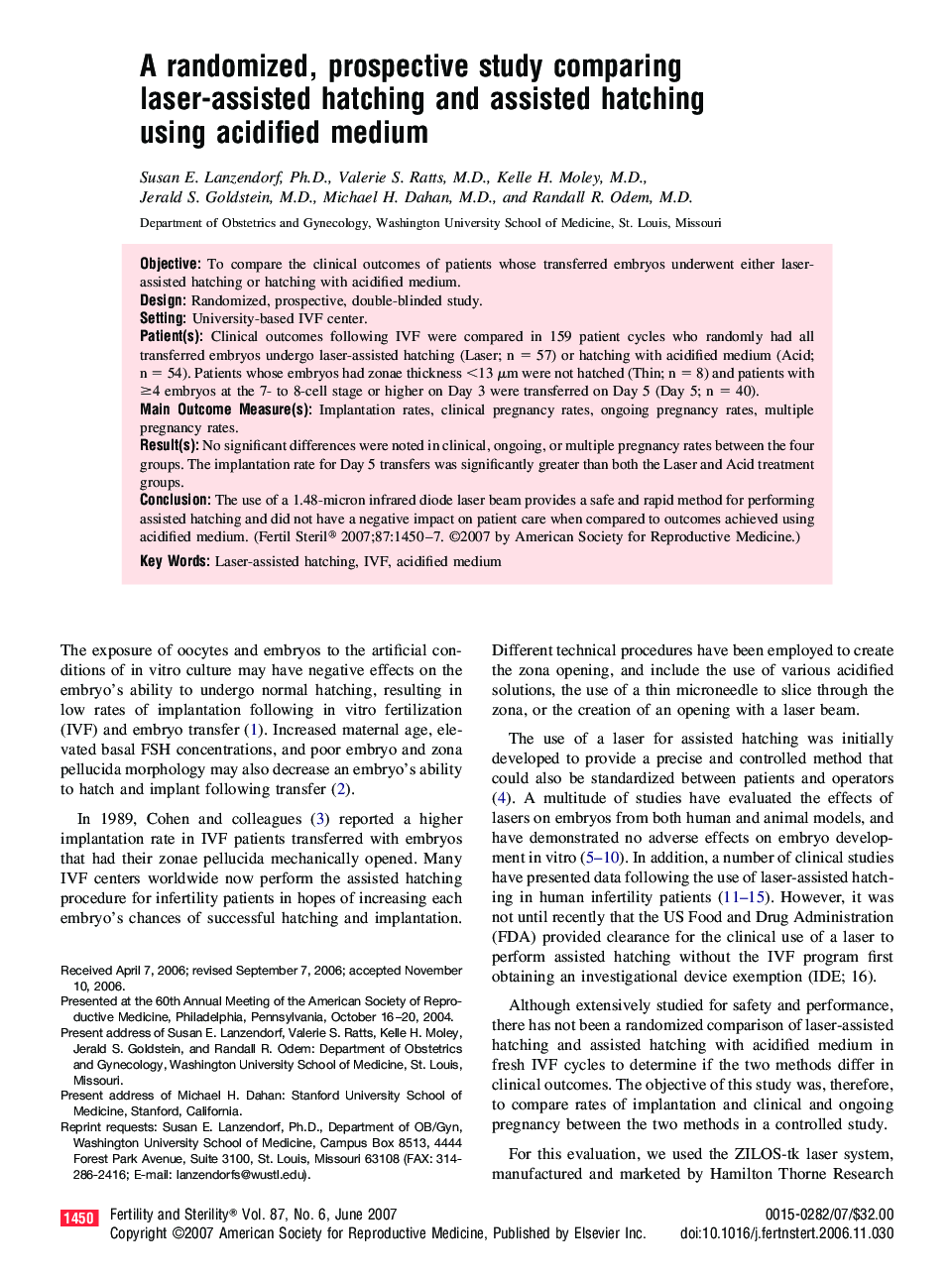| Article ID | Journal | Published Year | Pages | File Type |
|---|---|---|---|---|
| 3942023 | Fertility and Sterility | 2007 | 8 Pages |
ObjectiveTo compare the clinical outcomes of patients whose transferred embryos underwent either laser-assisted hatching or hatching with acidified medium.DesignRandomized, prospective, double-blinded study.SettingUniversity-based IVF center.Patient(s)Clinical outcomes following IVF were compared in 159 patient cycles who randomly had all transferred embryos undergo laser-assisted hatching (Laser; n = 57) or hatching with acidified medium (Acid; n = 54). Patients whose embryos had zonae thickness <13 μm were not hatched (Thin; n = 8) and patients with ≥4 embryos at the 7- to 8-cell stage or higher on Day 3 were transferred on Day 5 (Day 5; n = 40).Main Outcome Measure(s)Implantation rates, clinical pregnancy rates, ongoing pregnancy rates, multiple pregnancy rates.Result(s)No significant differences were noted in clinical, ongoing, or multiple pregnancy rates between the four groups. The implantation rate for Day 5 transfers was significantly greater than both the Laser and Acid treatment groups.ConclusionThe use of a 1.48-micron infrared diode laser beam provides a safe and rapid method for performing assisted hatching and did not have a negative impact on patient care when compared to outcomes achieved using acidified medium.
